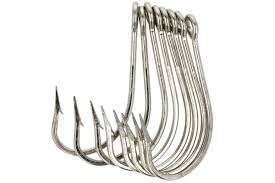The Hidden Hero of Every Catch: A Deep Dive into Fishing Hooks
Fishing is one of the oldest skills known to humanity, evolving from a basic survival method into a beloved sport and peaceful hobby. But behind every successful catch lies a tiny tool that often doesn’t get enough credit, the fishing hook. This small piece of gear plays a massive role in whether or not a fish ends up on the line. Whether you’re a beginner or a seasoned angler, understanding fishing hooks can make all the difference in your fishing experience. From different shapes and sizes to materials and special designs, fishing hooks have a story of their own.
Understanding the Importance of Fishing Hooks
When people think about fishing gear, they often focus on rods, reels, and bait. But it’s the hook that seals the deal. The fishing hook is the direct point of contact between the angler and the fish. Its job is to pierce the fish’s mouth and hold it securely as it is reeled in. A poor-quality hook can result in missed bites or lost fish. On the other hand, the right hook increases your chances of a successful catch. That’s why anglers often say, “The hook is everything.” It’s a small tool with a big job.
Types and Styles of Fishing Hooks
Let’s now explore the keyword fishing hooks in detail. There isn’t just one type of hook for all kinds of fish or water. Hooks are designed based on the kind of fishing you’re doing—saltwater, freshwater, fly fishing, or deep-sea fishing. The most common hook types include J-hooks, circle hooks, treble hooks, and offset hooks. J-hooks are the classic shape, good for beginners and general fishing. Circle hooks are popular in catch-and-release fishing because they’re less likely to harm the fish. Treble hooks have three points and are often used in lures. Offset hooks have a twisted design that improves hooking rates. Each type has a specific purpose, and choosing the right one depends on your fishing target and strategy.
Hook Sizes and What They Mean
Fishing hooks come in a variety of sizes. It’s important to understand how the sizing works because it can be a little confusing. Sizes range from tiny (like size 32) to massive (like 10/0). For sizes without a slash (like 2, 4, 6), the larger the number, the smaller the hook. But for sizes with a slash (like 1/0, 2/0, 3/0), the larger the number, the bigger the hook. Smaller hooks are used for light fish like trout or panfish. Larger hooks are for big game fish like tuna or catfish. Using the wrong size hook can mean either not catching fish or harming them unnecessarily.
Materials and Strength
Most modern fishing hooks are made of high-carbon steel, stainless steel, or a blend of metals. High-carbon steel hooks are sharp and strong but can rust easily, so they are ideal for freshwater use. Stainless steel hooks resist rust and are better for saltwater fishing. The material also affects the weight of the hook, which in turn affects how your bait behaves in the water. A heavier hook may sink faster, while a lighter one allows for a more natural bait movement. Some hooks are coated with special finishes like black nickel, gold, or red to attract fish or prevent corrosion.
Hook Sharpness and Design Features
A sharp hook is more likely to penetrate the fish’s mouth and stay in place. Hooks can be chemically sharpened or mechanically ground. Chemically sharpened hooks tend to be more precise and sharper but may dull more quickly. Some hooks come with barbs—small spikes on the shank or point that help prevent the fish from slipping off. Barbless hooks are often used in catch-and-release fishing because they cause less damage and make it easier to unhook the fish. Other features to look for include eye shape (loop, ringed, or needle), shank length (short, standard, long), and bend style (wide gap, extra wide gap).
Choosing the Right Hook for the Job
The best fishing hook is the one that matches your fishing conditions. If you’re using live bait like worms or minnows, smaller J-hooks or circle hooks work well. If you’re using artificial lures, treble hooks might be better. For deep-sea fishing, strong, corrosion-resistant hooks are essential. Also, think about the type of fish you’re targeting. Some fish have soft mouths, making them easier to hook. Others, like bass or pike, have tough mouths that require extra-sharp or reinforced hooks. Don’t be afraid to carry a few types and test them out on different days.
Conclusion
Fishing hooks may be small, but their role in fishing is huge. From the design and material to the size and sharpness, every detail can impact your success on the water. By understanding the different types of fishing hooks and how to care for them, you’re not only improving your skills but also making your time fishing more enjoyable. So next time you cast your line, remember, it’s the hook that connects you to the fish. Choose wisely, care for it well, and let this tiny hero do its job.




Leave a Reply
Want to join the discussion?Feel free to contribute!